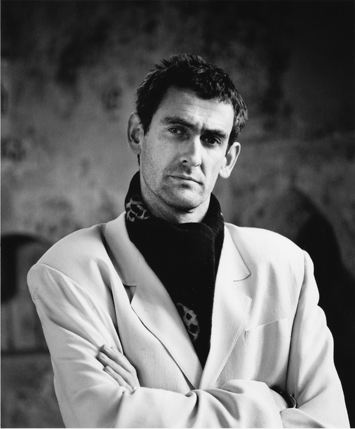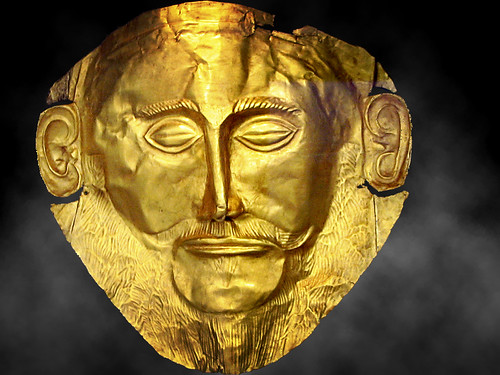The legendary Ninth Legion – Legio IX Hispana (The “Spanish Legion”) – was one of the oldest and most feared units in the Roman army by the early 2nd century AD. Raised by Pompey in 65 BC, it had fought victorious campaigns across the Empire, from Gaul to Africa, Sicily to and Spain and Germania to Britain. No one knows for sure why, but sometime after 108/9 AD, the legion all but disappeared from the records. The popular version of events – propagated by numerous books, television programmes and films – is that the Ninth, at the time numbering some…
-
-
Key Dates 700 BC Thought to date from around 700 BC, 25th Dynasty. Key People Harwa Perhaps one of the most popular mummies in The Field Museum’s collection is that of Harwa, who died around 700 BC (25th Dynasty). His wrappings have been removed so that visitors can gaze upon his ancient face, preserved for almost 3,000 years. During the unwrapping process, dozens of colorful amulets made of gold, semi-precious stones, and glazed pottery were found within Harwa’s burial linens. Many of the amulets are displayed with his mummy in the approximate place in which they were originally found. Each…
-
Key Dates 1800 BC Created during the Middle Kingdom 2055-1650 BCE, given to Kelvingrove Art Gallery and Museum 1903 by the Egypt Exploration Fund Key People The Eye of Horus is an ancient Egyptian symbol of protection and royal power from deities, in this case from Horus or Ra. The symbol is seen on images of Horus’ mother, Hathor, and on other deities associated with her. Horus ruled the living and his father Osiris ruled the dead. He protected the reigning pharaohs, and appears as . In this limestone tablet, Horus, the ancient Egyptian sky god, also known as Re…
-
Key Dates This item dates from the 18th Dynasty, circa 1391-1353 BC. Key People An inscription at the bottom of this statue reads, “Amenophis III, beloved of the goddess.” This statue of the Sekhmet is one of many diorite sculptures dedicated to the powerful goddess. Sekhmet is portrayed with a dual personality; she has the body of a woman and a lion’s head. This statue is particularly interesting, however, by virtue of the artist’s great skill in blending the lion’s features with those of a woman; the lions mane morphs into human hair, and Sekhmet wears a dress down to…
-
Key Dates 1800 BC The papyrus is from the Late Middle Kingdom, between 1850 – 1700 BC. Key People Horus, god of the king, sky and vengeance in ancient Egyptian religion. Seth, aka Set, god of storms, chaos and the desert. Osiris, god of the underworld. The Tale of Horus and Seth is an ancient Egyptian myth about Horus and Seth’s rivalry for the Egyptian throne, held in the story by Osiris, Horus’ father and god of the underworld. There are several versions of the story worldwide, but this particular one, held at the Petrie Museum in London, allegedly contains…
-
The ancient Egyptians weren’t the only ones that mummified their dead for the sake of posterity. In more modern times, there have been multiple examples of mummification, using a range of weird and wonderful techniques from simple embalming to submerging the cadaver in a chemical-filled preservation tank, or perfusing it with wax, effectively rendering the corpse a giant human candle. Here we examine ten of the most famous examples of modern mummies, their stories, and some of the methods used to preserve them for eternity. The deceased range from an Argentinean First Lady, a Soviet Head of State and various…
-
The exact time for the Spring (or Vernal) equinox 2011 is March 20th, 23.21 UCT. The sunset on the 20th is at 6.13pm and the sunrise on the 21th of March at 6.02am. English Heritage did not confirm the date for Open Access for Stonehenge for the Spring Equinox 2011 yet, but most likely this will be dawn on the 21th of March. Expect a short period of access, from approximately 5.45am to 8.00am. Event Details Event Dates: Monday 21 March 2011 to Monday 21 February 2011 – ended ERROR – end date before start date Event Start Time: 5am Event Length:…
-
Jon Cannon Expert and writer on British heritage Jon Cannon writes about old places in general and teaches medieval architectural history in particular. He teaches at the University of Bristol and frequently gives talks and leads tours on the subject. He has also published several articles on Avebury, and contributes a regular profile of a historic area – from ancient prehistory to 20th century heritage – to British Archaeology magazine. He has worked in the heritage industry for nearly 15 years, including working for the Royal Commission on the Historical Monuments of England, and English Heritage. He went freelance in…
-
Curator specializing in King Tut Dr. David P. Silverman serves as the curator, advisor and academic content creator for the exhibition Tutankhamun and the Golden Age of the Pharaohs. This exhibit truly completes a full circle for him; in 1977, he was in charge of curatorial content for the exhibition Treasures of Tutankhamun at Chicago’s Field Museum. He also co-authored the text panels and labels that traveled around the United States with the exhibition, which attracted an unprecedented 1.8 million visitors in its run at the Metropolitan Museum of Art in 1979 and inspired the phenomenon known as ‘Tutmania’. A…
-
Key Dates 1500 BC The Mask of Agamemnon is an artifact discovered at Mycenae. The mask is one of ten discovered in the shaft graves at Mycenae, three in Grave V and two in Grave V. It is now housed in the National Archaeological Museum in Athens. Key People The mask was discovered in 1876 by Heinrich Schliemann a German archaeologist, an advocate of the historical reality of places mentioned in the works of Homer, and an important excavator of Troy and of the Mycenaean sites Mycenae and Tiryns. Schliemann believed that he had discovered the body of the legendary…






